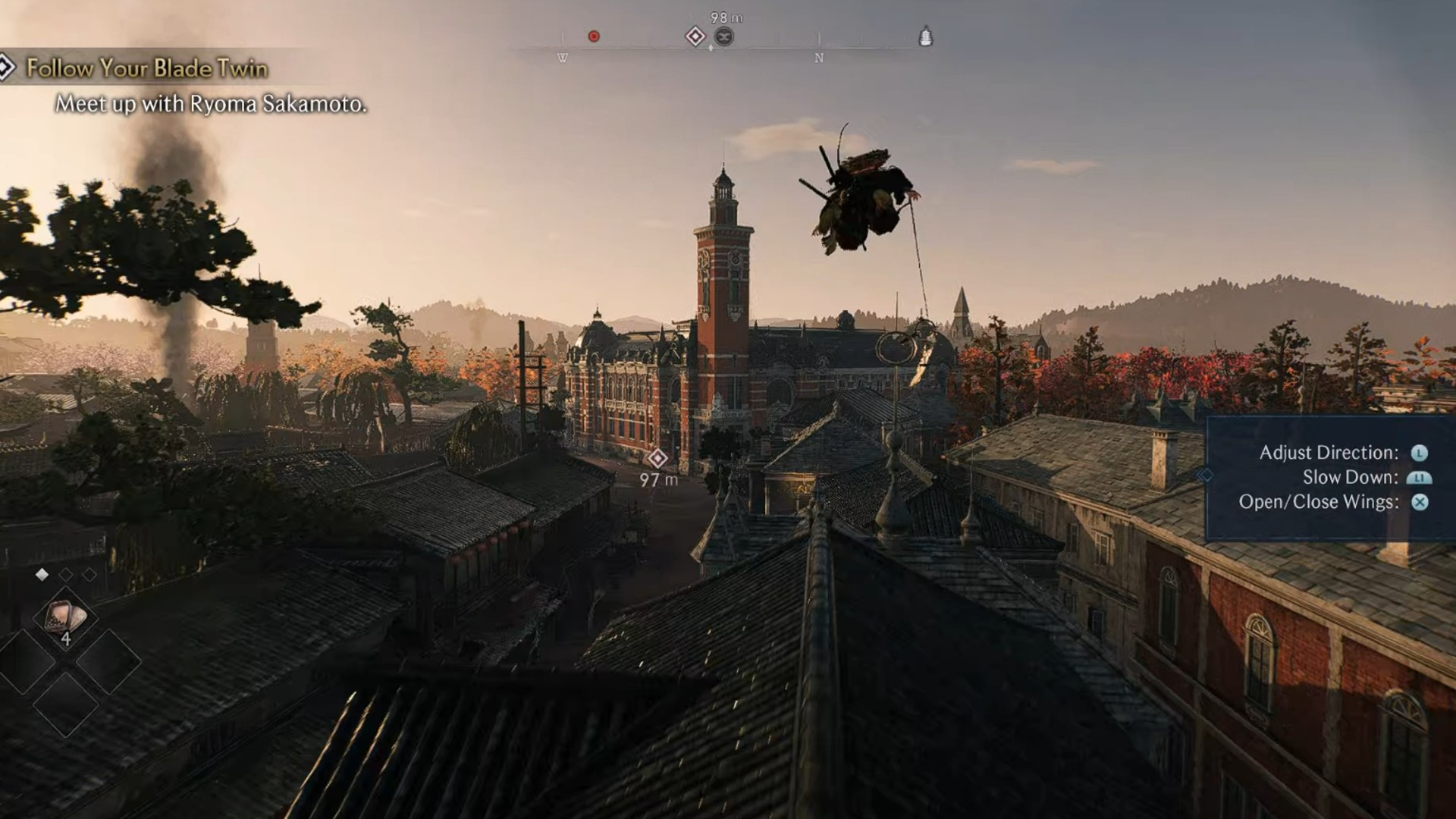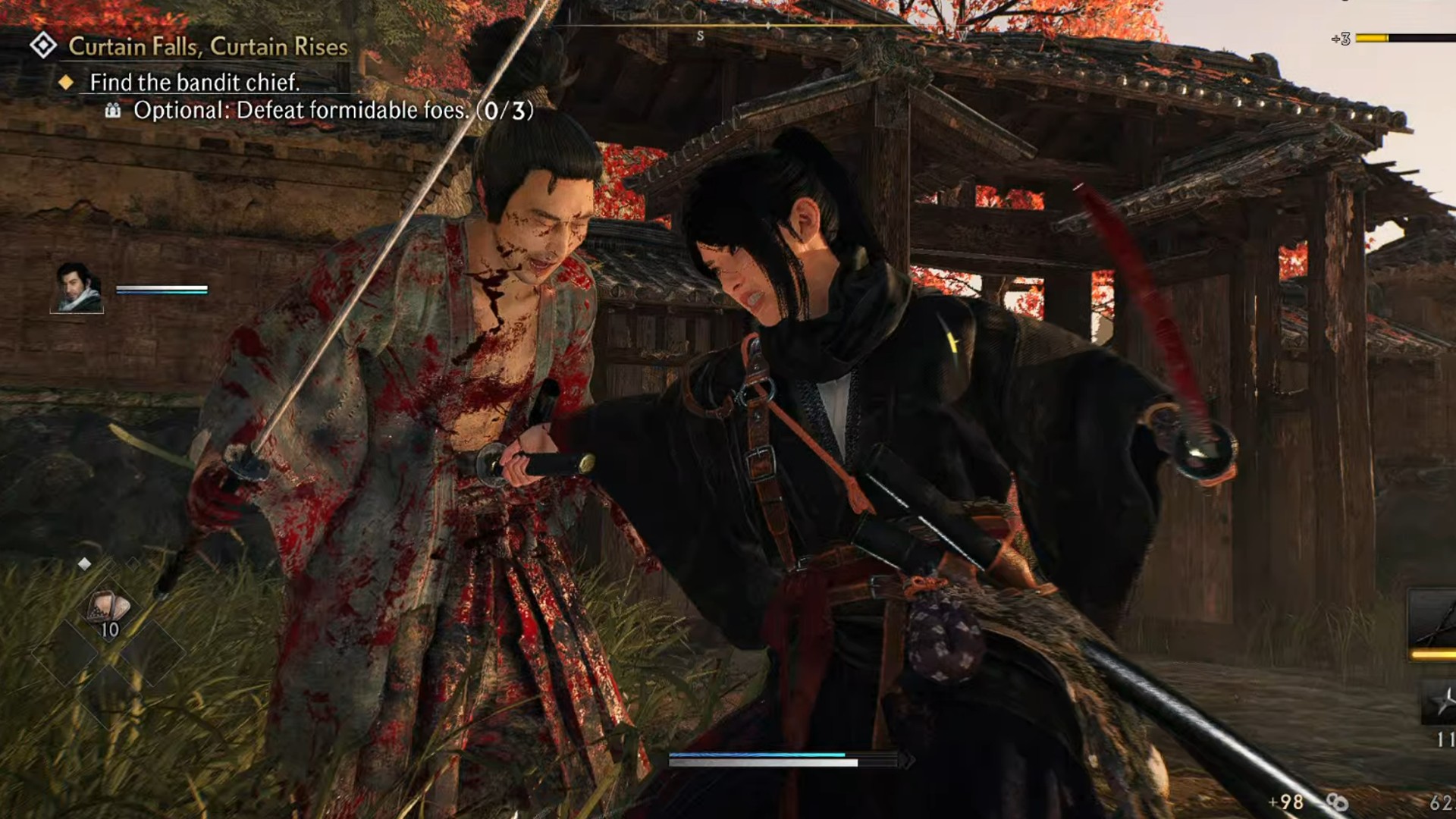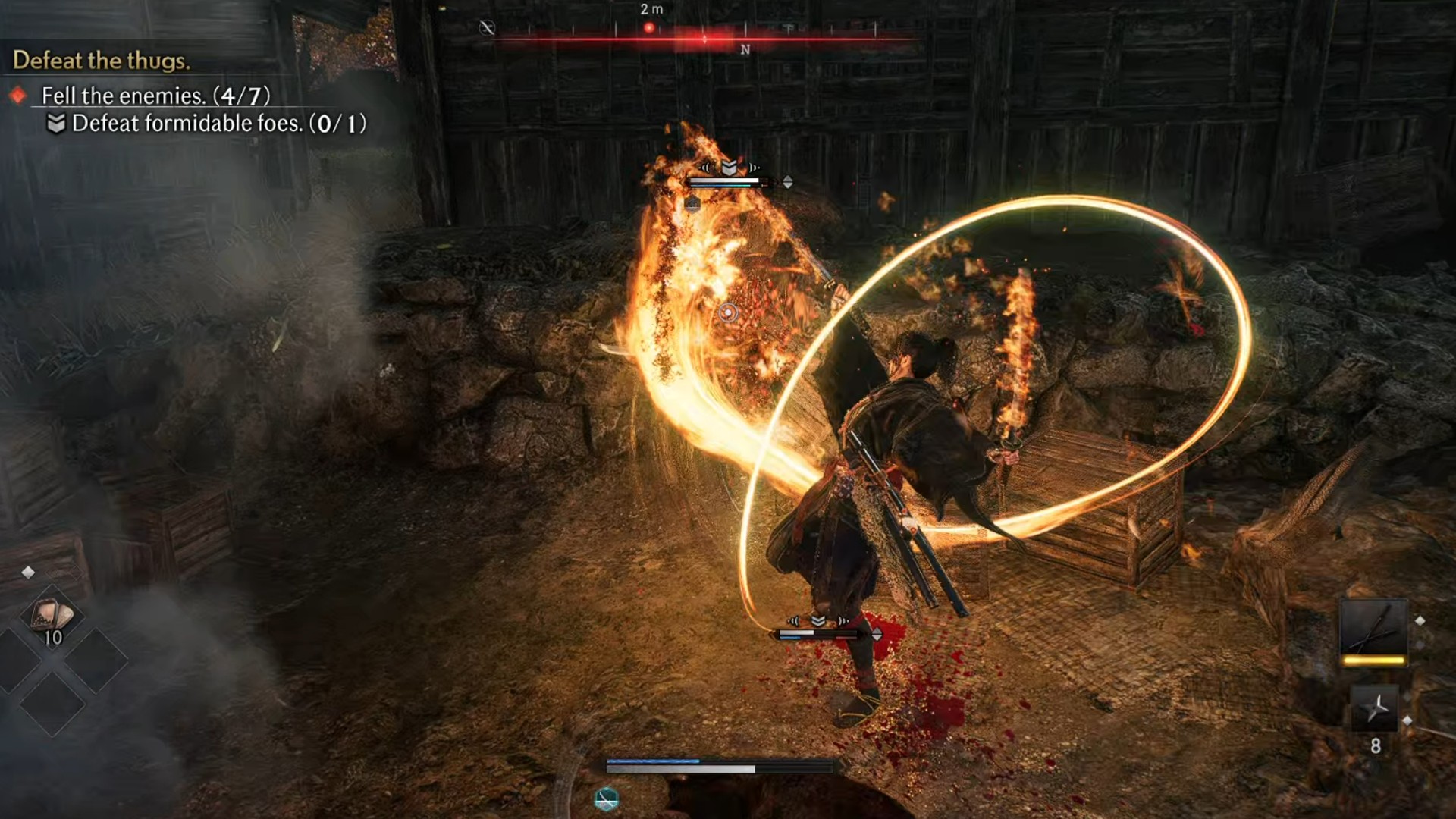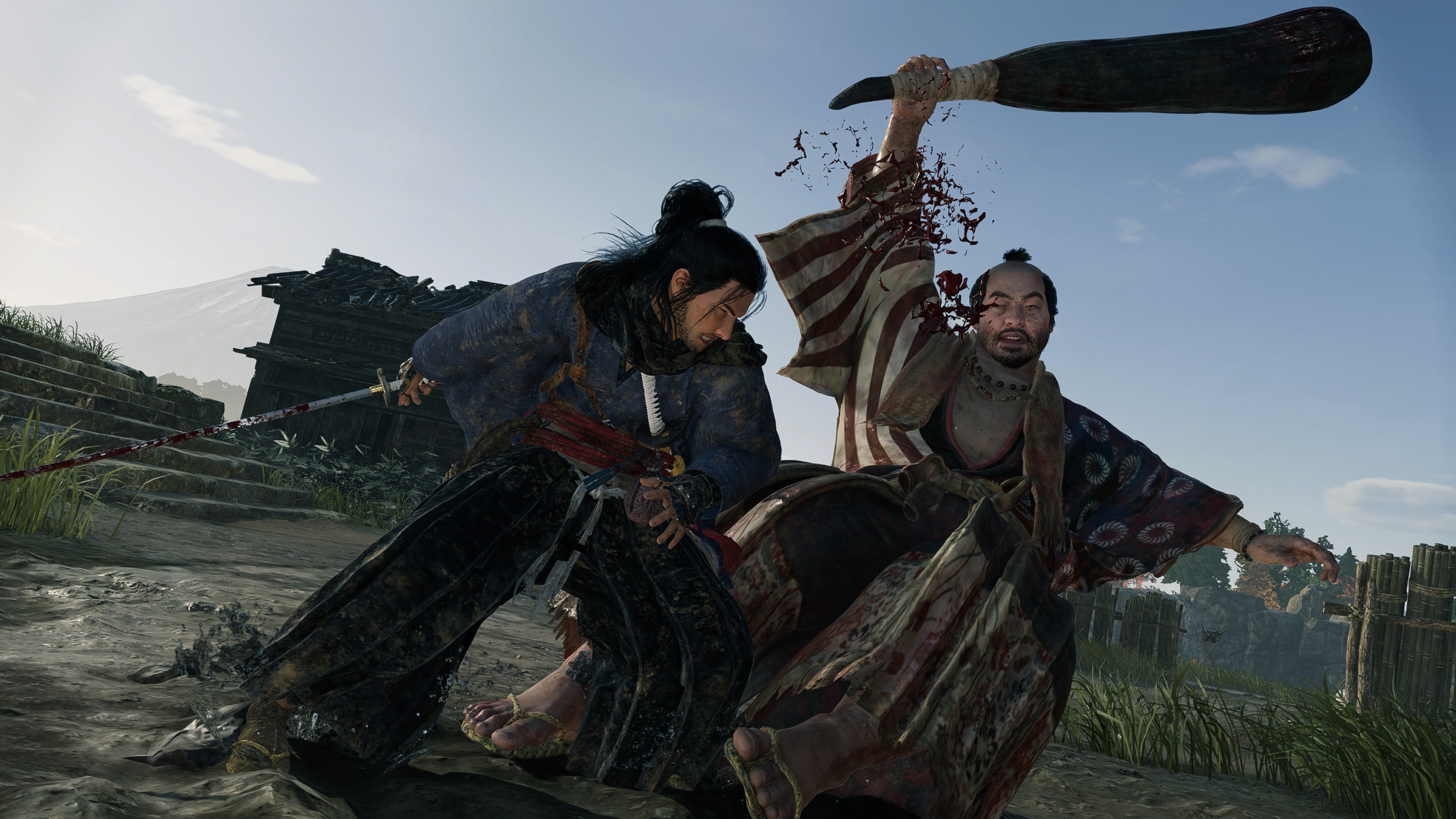GamesRadar+ Verdict
Rise of the Ronin is a solid action RPG experience that could, and probably should, have been stronger. It's fun but too familiar in the grand pantheon of similar offerings – not least from developer Team Ninja's back catalog itself.
Pros
- +
Multi-layered combat offers loads of variety
- +
Plenty to explore in every corner of the map
Cons
- -
Just about everything can feel repetitive after time
- -
Visuals a little rough around the edges
Why you can trust GamesRadar+
Rise of the Ronin is deceptively deep. You can absolutely play and enjoy this multi-systemed, open-world action-RPG without having sampled any of Team Ninja's back catalog beforehand. But if you have taken the likes of Nioh, Wo Long: Fallen Dynasty or, going back a little further, Ninja Gaiden for a spin in the past, there's a good chance you'll settle into the structured rhythm the developer has delivered so well in previous outings. Rise of the Ronin does eventually let you stray from the beaten path to tackle its checkpoints and sandbox side-missions as you please, but there's a precise cadence to its questing and conquering that often feels formulaic.
Release date: March 22, 2024
Platform(s): PS5
Developer: Team Ninja
Publisher: Sony Interactive Entertainment
And so while we've come to expect genre games of this style to be massive, sophisticated undertakings, there was part of me that felt continually, and pleasantly, surprised by Rise of the Ronin's ability to systematically tease more and more of what makes it tick over time.
To be clear: Rise of the Ronin is indeed a big ARPG, with tight combat mechanics, a vast suite of customization options (both pre and mid-game), and an array of interesting NPCs and expansive quests. It's not the biggest open-world playground on the market by any stretch, nor is it the prettiest, but it does have a wonderful knack for letting you peek behind the curtain and making you think you've forced the game's hand in doing so. You haven't – Rise of the Ronin is always in control as it perpetuates the illusion of choice from the outset – but its pacing and framing in order to allow this is up there with some of the best I've seen in the action-role-playing space in recent times.
The hills have eyes

Set in 1863 during the Bakumatsu period, Rise of the Ronin kicks off with the Black Ships of the West having docked on Japanese shores ahead of their forceful bid to reestablish eastern trade routes. In the twilight stretch of the Shogunate era, you fill the nimble shoes of a warrior ronin, roving around a real-world-inspired slant on mid-19th century Yokohama in a mission-packed open-world sprawl that echoes everything from Assassin's Creed to Ghost of Tsushima and indeed Team Ninja's own Nioh.
The map itself is the first notable Rise of the Ronin feature that offers more than meets the eye. Over time, the games mentioned above and their ilk have instilled a sense of insular familiarity in mission-led action RPG exploration, whereby innocuous set-dressing like yellow paint and physical quirks such as auto-traversal by simply walking into structures have become ubiquitous. Rise of the Ronin, however, encourages you to use your imagination on your travels – be that on foot, climbing walls, throwing yourself into the air with a grappling hook, or soaring through it with your glider, the game wants you to fumble in the dark before hitting those lightbulb moments that illuminate the way. Quite often, there is a way onto that far-flung ledge, or into that cave way below, or around that towering hill or sunken valley, you just need to find it.
From an aesthetic point of view, Yokohama itself feels lived in. Smoke bellows from camp fires in distant towns, while stony stairways hacked into the mud indicate nearby civilizations, linked by long stretches of quaint pastoral plains and idle rows of cherry blossom trees. Mechanically, on the other hand, Rise of the Ronin strives to balance its modestly-sized open-world by filling it full of side ventures and single-serving tasks that feed directly into leveling up your character.
Ridding villages of unwanted bandits, for example, grows your Regional Bond with the area while also granting you Karma which can be banked at Banner checkpoints and exchanged for Skill Points. Skill Points are tied to the Strength, Dexterity, Charm, and Intellect skill trees, with activities such as glider challenges, praying at shrines, and, believe it or not, finding cats all viable ways of earning rewards. Even if you start off pursuing one pre-set class from the outset (for example, the 'Breaker' build is a stealth-meets-dexterity outfitting), Skill Points can be spread into other areas of expertise as you settle into your own fighting style. Better still, you can switch between Rise of the Ronin's core three styles – Jin, Chi and Ten – mid-battle with the touch of a button, allowing you to play to your strengths and, more importantly, your enemies' weaknesses.
As well as Skill Points, successfully completing these tasks can net you Silver Coins – Rise of the Ronin's secondary currency that's primarily used to obtain its most coveted items – making combing the map and wringing each zone of its extra-curricular activities a routine that, while optional, is essentially the best way to grow your character beyond beating bosses and enemy gangs.
Put up your dukes

"Enemy AI appears torn between realistic long-distance vision (which is neat but totally un-video game-friendly) and some pretty non-existent hearing"
Of course, pretty much everything noted above is driven by Rise of the Ronin's multi-layered combat system. Similar to modern ARPGs such as Elden Ring, and even old-school fighting games like Bushido Blade, simply bashing buttons with your sword(s) raised will get you nowhere. Instead, balancing speed and power is crucial to success, with the former often just as, if not more, important than the latter. Tempting as it is to go in all guns blazing, biding your time in battle is always the best method, as you work out your enemy's movement patterns and decide when is best to move and strike, or duck and defend yourself.
Keeping half an eye on your Ki level is also vital mid-fight. Ki is stamina by another name, so you'll want to make sure you have enough to exploit gaps in attack patterns, to move quickly when your opponent drops their guard, and to break their stance and execute a brutal stomach-turning, blood-spilling cinematic takedown at every opportunity. Through this, Counterspark will become your best friend. Rise of the Ronin's answer to parrying, hitting triangle at the exact right time allows you to drain your opponent's Ki at a faster rate while slowing the depletion of your own, and giving you the upper hand.
As you find your feet with timing in combat, ranged weapons are a good go-to. From pistols to muskets, bows, shurikens and more, putting distance between yourself and your aggressor before nailing a headshot is damn satisfying – to the point where I found myself almost exclusively flying through low-stakes skirmishes splitting skulls with my rifle. You can even use your grappling hook to haul foes from height, or pull them closer similar to the signature move of Mortal Kombat's Scorpion.
Besides end-of-zone bosses, stealth is another sort-of viable option in Rise of the Ronin. You see, enemy AI appears torn between realistic long-distance vision (which is neat but totally un-video game-friendly) and some pretty non-existent hearing, meaning you can shoot baddies at point-blank range in the head with a very loud rifle, only to have their pals 10 yards away continue to look in the opposite direction. I found this to be one of Rise of the Ronin's most frustrating features as it directly impacts exploration – if you stumble into an enemy-filled zone that you want to investigate, there's virtually no risk-versus-reward mechanics in place to encourage sneaking in favor of tearing the place down.
This becomes a little bit easier to stomach when you begin forming personal bonds with NPCs; when taking over new locations almost always gets bloody. One of Rise of the Ronin's defining features is its Human Bonds, whereby deepening your relationships with NPCs can bring valuable items, teach new combat styles, and grant you special abilities in battle when paired with specific people, among other perks and bonuses. Spending more time with bonded NPCs naturally increases that bond, while giving them gifts can help speed that process up. For me, the best thing about all of this is being able to control your NPCs in battle, granting you access to new and undiscovered fighting styles that can compliment, or even determine, your own.
Multiplayer likewise accentuates this – Rise of the Ronin can be played with up to three players, be that other friends, AI allies, or a combination of the two – and while I've so far only been able to play with computer-controlled back-up pre-release, I presume online servers will fill out following the game's release on March 22.
Dead ja vu

It's understood that developer Team Ninja has been working on Rise of the Ronin for some time (even before 2017's esteemed ARPG, Nioh), and I think that's reflected in how ambitious this game is. The thing is, against the likes of Nioh, Nioh 2, and to an extent Wo Long: Fallen Dynasty, Team Ninja is a victim of its own success. Rise of the Ronin is a good action role-player, but it's impossible not to draw comparisons to similar ventures that have held the genre up over the last several years.
Stealth is better in Elden Ring. Combat is more intuitive in Nioh 2. Visually, Ghost of Tsushima is head and shoulders prettier. And mechanically, modern Assassin's Creed games have the multi-mission, open-world, shopping list of questlines format nailed down. Even Rise of the Ronin's Karma and Vendetta systems – Karma is essentially XP, earned after killing enemies; Vendettas are triggered when an enemy kills you, after which killing them after respawn restores your Karma – have featured in various forms for years in other games. Crafting in Rise of the Ronin is a smart way of keeping on top of health items, but it's no less arbitrary than any other game in this genre, or, looking over the fence, in the survival space over the last decade or so.
All of which leaves me with the feeling that Rise of the Ronin could, and probably should, have been stronger across the board. It looks nice, but not always great, with occasional texture pop-in spoiling longer-distance views. Its combat is fun, its world is worth exploring, and the game itself does a fine job of showing you just (and only just) what it needs to at any given moment. The problem is, it brings very little that's new to the table. Which isn't necessarily a bad thing, of course, but it definitely doesn't match a game that clearly had ambitions to be something greater.
Rise of the Ronin was reviewed on PS5, with code provided by the publisher
More info
| Genre | Action |

Joe Donnelly is a sports editor from Glasgow and former features editor at GamesRadar+. A mental health advocate, Joe has written about video games and mental health for The Guardian, New Statesman, VICE, PC Gamer and many more, and believes the interactive nature of video games makes them uniquely placed to educate and inform. His book Checkpoint considers the complex intersections of video games and mental health, and was shortlisted for Scotland's National Book of the Year for non-fiction in 2021. As familiar with the streets of Los Santos as he is the west of Scotland, Joe can often be found living his best and worst lives in GTA Online and its PC role-playing scene.



